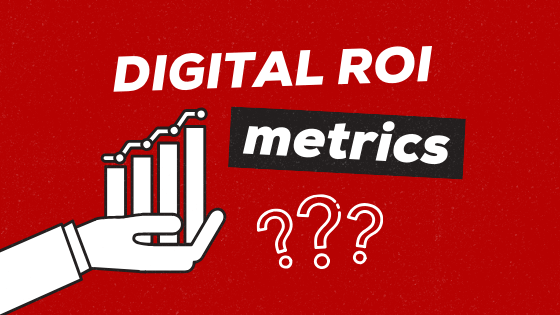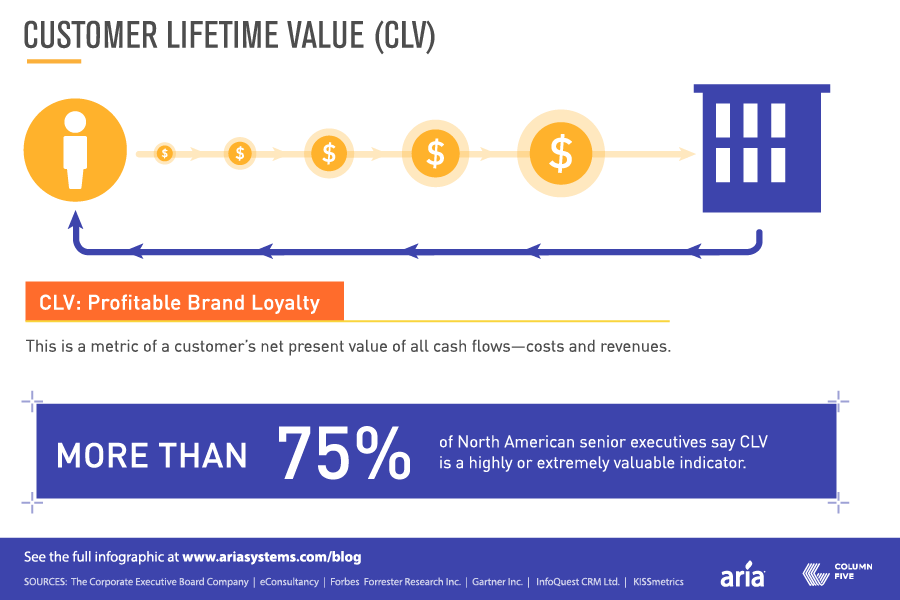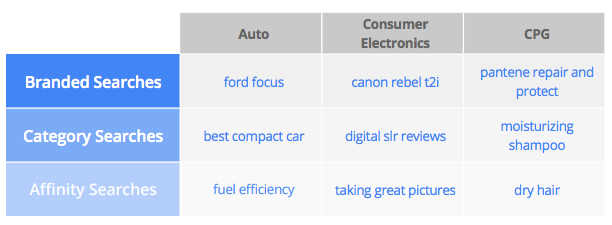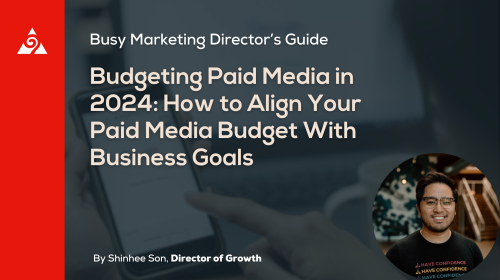Digital marketing campaigns need to be treated as investments – at least, that’s what we believe at Augurian.
The best way to tie a digital investment to overall performance is by calculating Return on Investment (ROI). But with so many variables and places to attribute marketing results, it isn’t as easy as you might think.
The Top 10 Advertising ROI Metrics
In this guide, we’ll cover how to measure ROI on marketing spend using these 10-key digital marketing measurement metrics. Tactics vary when it comes to campaign ROI calculation, so understanding these marketing ROI metrics is a smart place to start.
We’ll tell you about the benefits and limitations of each metric and how they can contribute to the calculation of ROI in marketing.
- Unique Monthly Visitors
- Cost Per Lead (CPL)
- Cost Per Acquisition (CPA or CAC)
- Return-on-Ad-Spend (ROAS)
- Average Order Value (AOV)
- Customer Lifetime Value (LTV)
- Lead-to-Close Ratio (LTCR)
- Branded Search Lift
- Average Position
- Non-Brand CTR
DIGITAL MARKETING ROI CAN BE HARD TO CALCULATE
Unless you’re strictly an E-Commerce website, the calculation of ROI in digital marketing is very challenging. This is especially the case with firms that specialize in services, B2B, and other industries where you are not directly selling products online. Still, it’s important to understand how to measure marketing ROI.
With this challenge in mind, here are 10 metrics to measure your digital marketing ROI (and how to calculate them).
Most of these metrics are not direct inputs for calculating marketing digital ROI but should help you get a broad sense of whether or not your digital marketing investments are resulting in profitability.
1. UNIQUE MONTHLY VISITORS
This metric tells you how many people are coming to your site on a monthly basis. It is very broad in the sense that without digging deeper, we don’t know how valuable this traffic may or may not be.
How to calculate Unique Monthly Visitors
This is tracked directly in Google Analytics, so there is no need for calculations. To get more specific, we can segment the traffic by source (paid, organic, social, etc) and then look at value-based metrics on these segments (more on this later).
Generally speaking, to gather data for ROI, analytics is a smart way to get started.
2. COST PER LEAD (CPL)
This metric tells you, in a general sense, whether or not your digital marketing efforts are profitable. Cost per lead is usually associated with paid traffic since you don’t technically pay for organic traffic.
How to calculate Unique Monthly Visitors
This is calculated directly in AdWords (and other advertising platforms) and is often also called “cost-per-conversion”
- It is up to you to make sure that your conversions align with what you consider to be a ‘lead’. Over or undercounting can result in skewed cost-per-conversion data if it’s not set up properly.
On the organic side, you aren’t paying on a per lead basis. Instead, you’re paying for SEO strategy and content marketing.
These efforts result in lead generation over time, but it can be difficult to tie back to a per lead cost. (Read more on SEM vs SEO.)
3. COST PER ACQUISITION (CPA OR CAC)
This metric tells you what you are paying to acquire an actual customer –not just a lead. Paid campaigns can view this in virtually real-time, and while this metric doesn’t directly apply to SEO efforts, you will (ideally) be able to blend the two lead sources together to see your actual Customer Acquisition Cost across all of your digital efforts.
How to calculate CPA in digital marketing
You don’t need a CPA calculator to gather this simple metric. CPA/CAC is calculated by your total digital marketing spend divided by your number of acquired customers.
4. RETURN ON AD SPEND (ROAS)
This metric tells you the revenue (instead of profit) earned for your ad spend but doesn’t factor in other costs such as the cost of goods sold. ROAS is a useful metric if you are able to tie revenue directly to digital marketing efforts. Return-on-ad-spend is useful to a degree, but you need to fully understand your profit margin to know what ROAS percentage you are profitable at.
How to calculate ROAS in digital marketing
If we think of digital marketing ROI as ROI = (Net Profit/Total Cost)*100, then Return-on-ad-spend is ROAS = (Revenue/Total Ad Spend)*100.
-
-
- For example, say you spend $100 on ads and get $300 in revenue as a result, but your product also costs $100 to make.
-
5. AVERAGE ORDER VALUE (AOV)
This metric tells you how valuable your paying customer is in each instance that they purchase. AOV is most useful for E-Commerce stores, but services and B2B can use the next metric instead.
For E-Commerce, we can multiply the AOV by the repeat rate to get an even more valuable metric, Customer Lifetime Value.
6. CUSTOMER LIFETIME VALUE (LTV)
This metric tells you what you can afford to pay in ad spend to acquire each customer profitably. LTV is important to know because it applies to every kind of business.
-
-
- E-Commerce can get an exact calculation for LTV.
- Other industries will need to come up with a looser projection, or could possibly use historical customer data to predict what LTV might look like.
-
7. LEAD-TO-CLOSE RATIO (LTCR)
This metric tells you if your leads are of high quality, whether your sales are efficient, and also helps project your digital marketing ROI.
How to calculate LTCR in digital marketing
Your Lead-To-Close Ratio is simply your total number of leads divided by how many leads have been closed.
- LTCR = Total number of leads / total number of closed leads
Projected ROI Formula
Let’s look at how we can arrive at projected digital marketing ROI if we know our Lead-to-Close Ratio (LTCR), Cost of Goods Sold (COGS), and Cost Per Lead (CPL). (Some companies don’t have a true “COGS” but can consider other variable costs here.)
Example: We have a lead-to-close ratio of 4, meaning that we close 25% of our leads.
- Our cost per lead is $10. LTV is $200 and our cost of goods sold over that lifetime is $80.
- We’ll shorten the formula by assuming that our Customer Acquisition Cost (CAC) = LTCR*CPL.
In our example, this gives us a CAC of (4*$10) = $40.
- From above, ROI = (Net Profit/Total Cost)*100
- Projected ROI = [(LTV-COGS-CAC)/(COGS+CAC)]*100
- Projected ROI = [($200-$80-$40)/($80+$40)]*100
- =($80/$120)*100
- =66.7%
If we’ve only managed to confuse you further about calculating digital marketing ROI, this post from Search Engine Journal might help clear things up – or, you can reach out to an Augur today to discuss your annual ROI in more detail.
8. BRANDED SEARCH LIFT
This metric tells you the increase in brand awareness over time as a result of digital marketing efforts.
How to Calculate Branded Search Lift
You can calculate your branded search lift by tracking the number of search queries that include your brand name per month. Over time, as you continue to track this, your branded search lift is simply how many additional monthly searches your brand receives.
In most cases, this isn’t only the result of search marketing, but all of your digital advertising campaigns.
For more, read Google’s study on how search ads lift brand awareness.
9. AVERAGE POSITION
This metric tells you which ranking you receive by search engines for keywords, on average.
How to Calculate Your Average Position
For organic, you can average position in Google Analytics, and in the publisher platform for paid.
- An average position of 1 would mean that you show up as the top result for every single keyword.
- If your average position is dropping closer to 1 over time, then your SEO and content marketing efforts are starting to have positive results.
A lower average position will usually lead to higher click-through rates, which means more traffic. If your SEO strategy was targeting valuable search terms to rank for, then you will likely see increases in revenue as well.
10. NON-BRAND CTR
This metric tells you how well your SEO campaign is performing. For this purpose, you can track it in Google Search Console.
Non-brand CTR also applies to paid search ad campaigns, where Google and other advertisers reward high CTR ads with priority positioning. In this case, it’s tracked in AdWords and other publishing platforms.
This metric doesn’t tie directly to leads, revenue, or ROI from internet marketing – but in many cases, you will see a positive correlation between them.
There are our top 10 metrics, listen to our friend Billy Cripe explain the 5 metrics he values most. Watch the full YouTube video for even more valuable insight.
Ready to assess your performance?
Our team can tell you more about what ROI means in digital marketing, how to measure ROI in digital marketing, and what you might be able to expect from the average marketing ROI in your industry.
Augurian can analyze and explain which ROI metrics that are driving growth for your business – so that you can Have Confidence in your digital marketing investments.
Reach out to an Augur today to discuss your digital marketing performance or to learn more about the advertising metrics and ROI. Or, visit our blog to explore digital marketing topics such as SEO, SEM, and Analytics.







